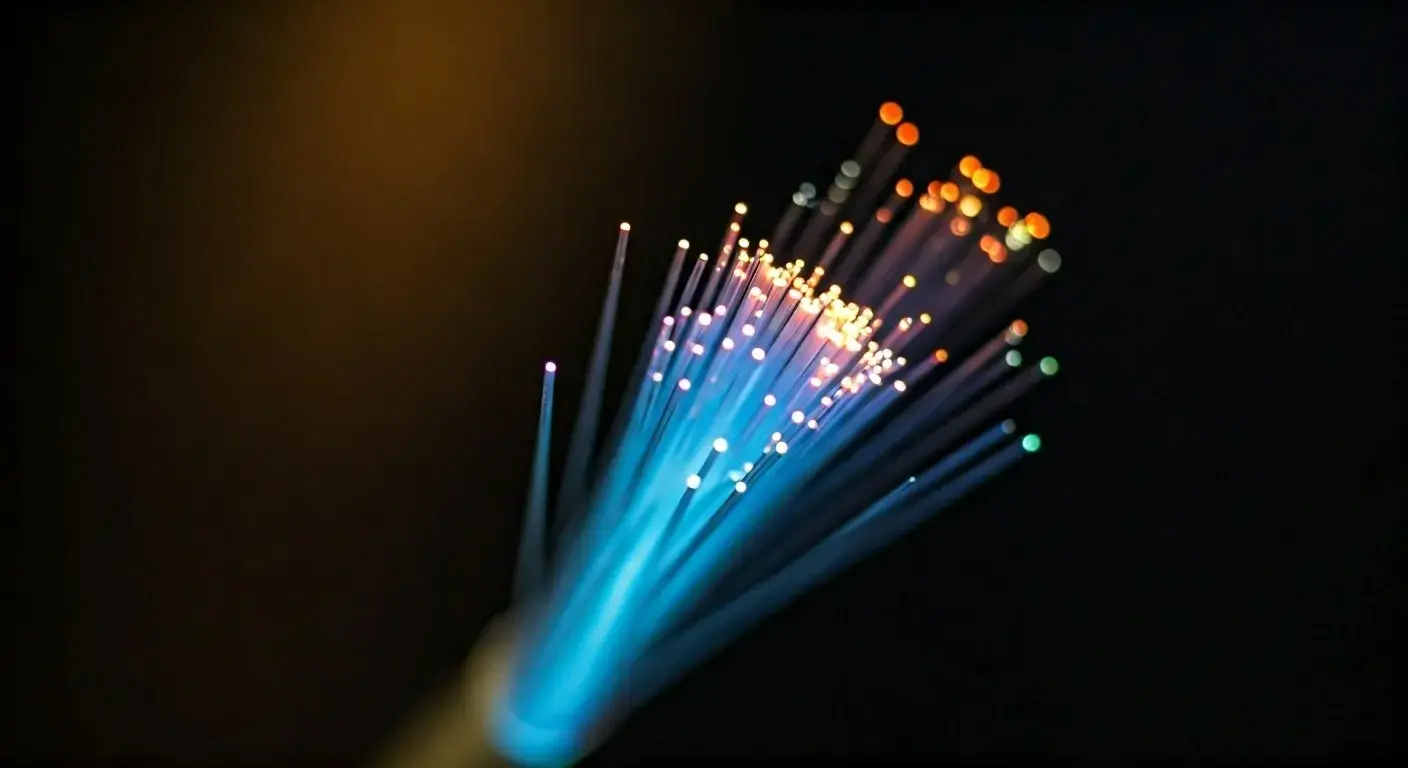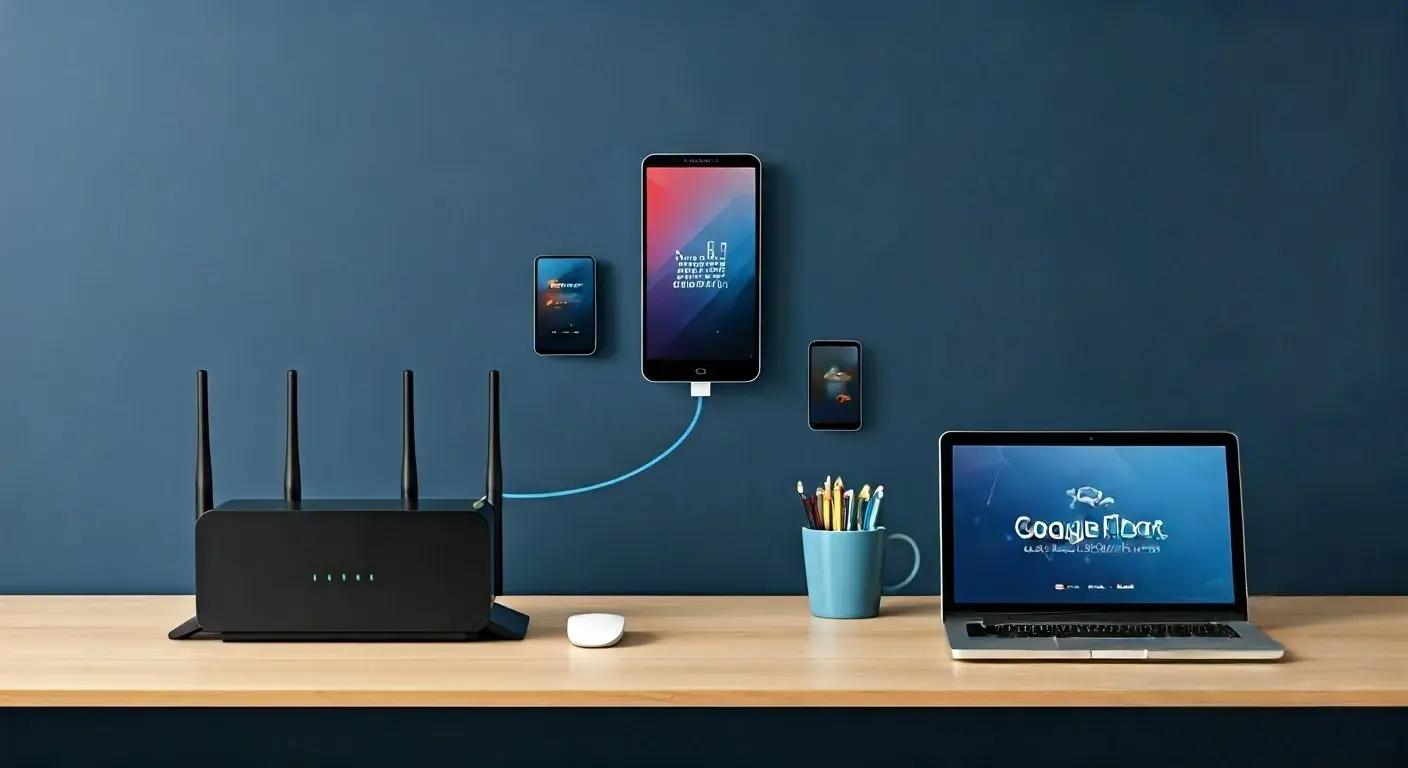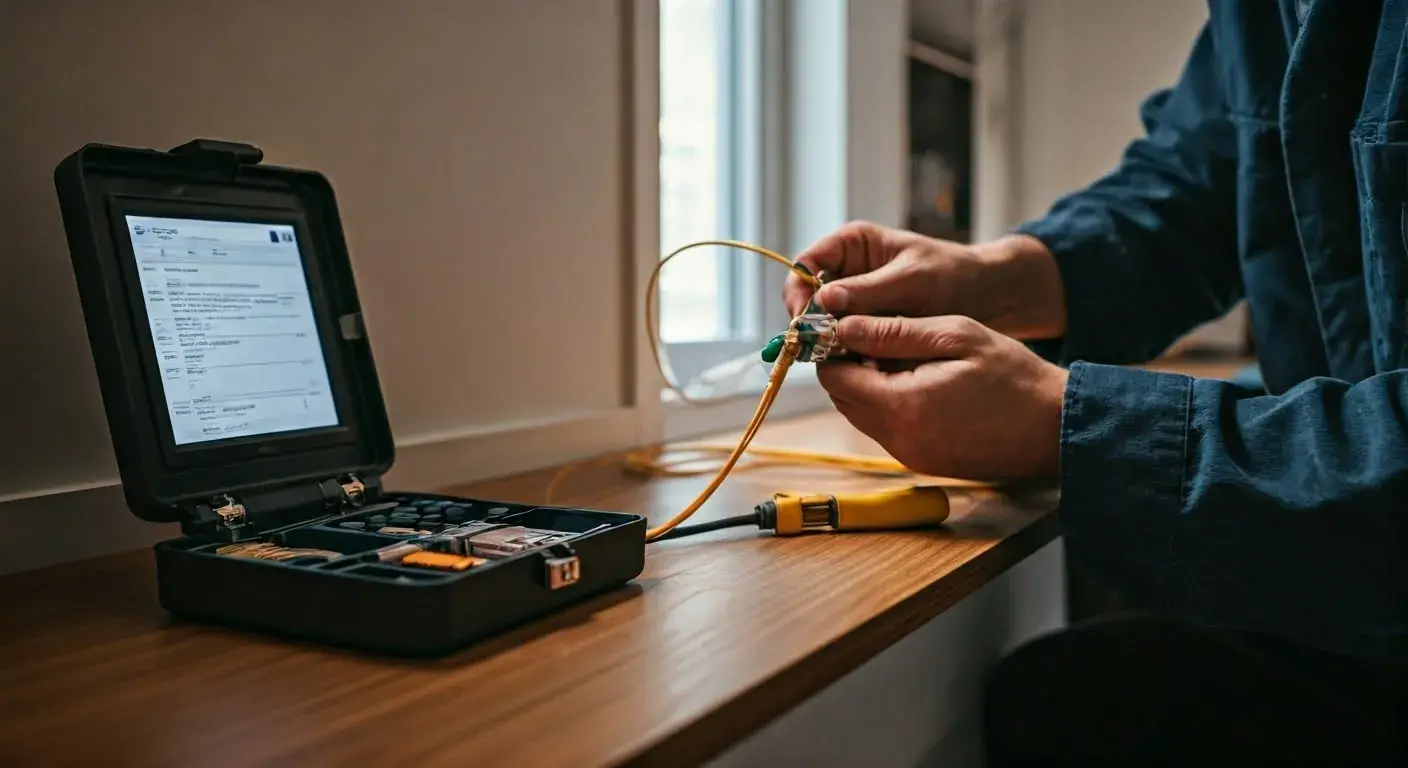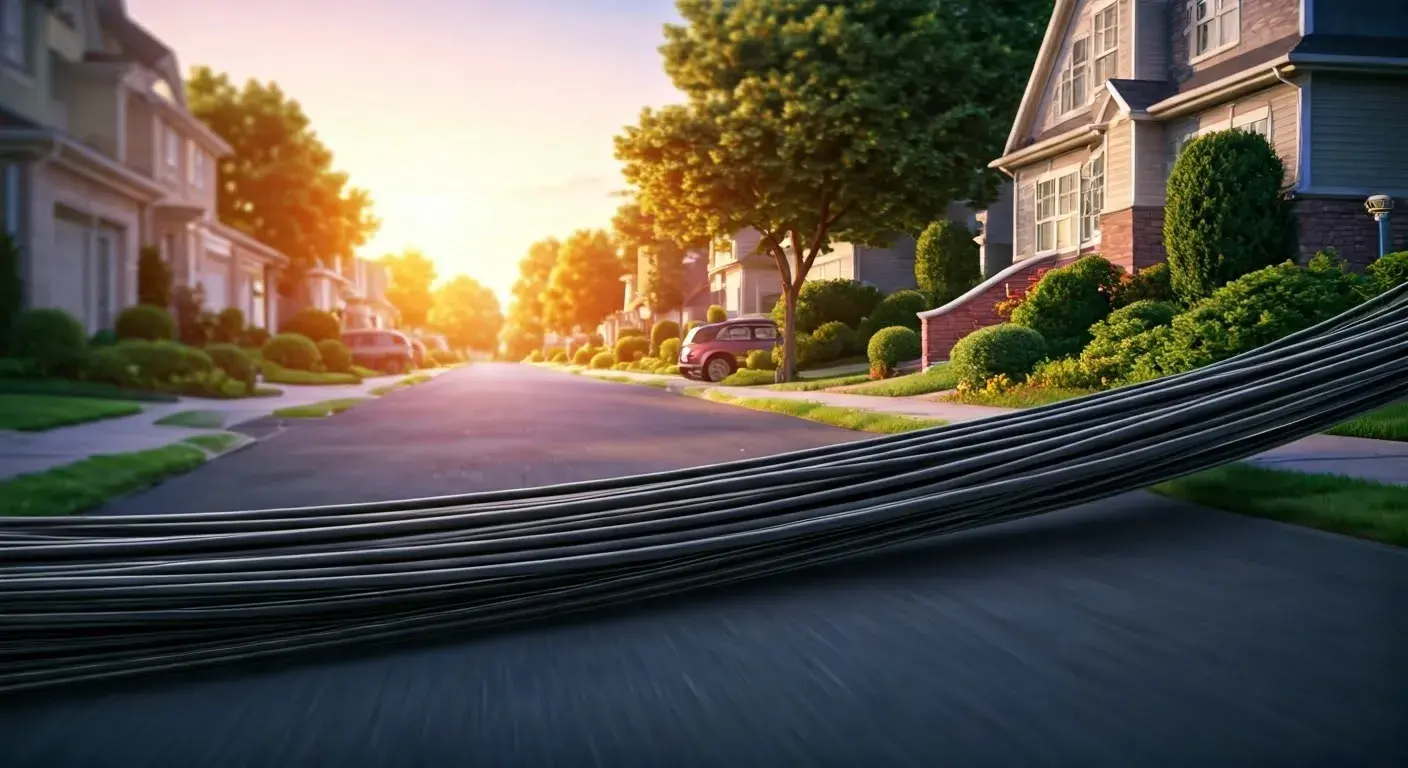Fiber Optic Internet: Speed, Cost, and Benefits Explained

Tired of slow videos and downloads? Nowadays, a fast and stable residential fiber internet connection is a must, not a luxury. Fiber internet is the new technology that is changing how we connect, work, and enjoy online activities. It offers incredible internet speed and many benefits. This is why fiber internet is quickly becoming popular among internet service providers. Let’s look at why fiber optic internet is getting so much attention.
Understanding Fiber Optic Internet
Fiber optic internet sends data using pulses of light through fiber cables. It travels through very thin strands made of glass or plastic. This is different from traditional cable internet, which uses electrical signals in copper cables. This change in how data is transmitted makes fiber optic technology faster and more reliable.
So, what does this mean for your internet experience? Think of it like a highway with clear lanes for data, with no data caps involved. This is much better compared to busy city streets. Because of this new way of delivering data, you get faster speeds, lower delays, and a much more stable connection.
The Basics of Fiber Optic Technology
Fiber optic technology might sound hard, but it is simple. Fiber internet uses light signals instead of radio signals and electrical signals to send data. These light signals have information in them and move through the optic cable very quickly. But how does an optic cable keep these light signals clear over long distances?
The answer is in how the cable is built. A fiber optic cable is made up of tiny strands of glass or plastic called optical fibers. These fibers have many layers of buffering and a sturdy outer cover. This helps the light move well, even if the cable bends or twists.
Using this way to send data has many benefits compared to traditional copper cables. Light signals don’t get disturbed by electromagnetic interference. This means a more stable connection. Plus, light can go much faster and farther with little signal loss. This gives better speeds and quality for data transmission.
How Fiber Optic Internet Works?
Imagine showing a flashlight down a long, shiny tube. The light can go through it, even around bends. Fiber optic internet works like this by utilizing different types of fiber to transmit data. It changes data into pulses of light. These light pulses travel through the optical fiber as light waves.
Each piece of optical fiber is very thin, even thinner than a human hair. But it can carry a lot of data at the speed of light. The signal strength stays strong throughout the whole trip. This is thanks to the special outer layer of the optical fiber, which stops the light from leaking out. This keeps a strong and steady signal, even over long distances.
When it reaches the other end, special gear changes the light pulses back into digital data. This gives you a fast and smooth internet connection. This way of sending data is what makes fiber optic internet better than others.
Advantages of Fiber Optic Internet
The world is quickly moving into the online space. A strong internet connection is now a need, not a want. Fiber optic internet is leading this change. It has many benefits compared to regular broadband services.
Fiber internet provides faster speeds, better security, and more reliability. It fixes the problems of old copper connections. This gives you a smooth and strong online experience for the future. Let’s look at the main reasons why optic internet is the best option in today’s connected world.
Unmatched Internet Speeds
One of the best parts of fiber internet is its amazing speed. Fiber optic connections can reach very high speeds, sometimes close to gigabit levels. This makes traditional cable internet look slow. While cable internet companies may promote fast speeds, they often talk only about download speed. Their upload speeds are usually much slower.
Fiber optic internet, on the other hand, provides symmetrical speeds. This means your upload speed is as fast as your download speed. This change is huge for activities like transferring large files, video calls, and online gaming where having high upload speeds matters for a good experience.
With these faster speeds, tasks that used to take a long time are now quick and easy. Downloading large files, streaming 4K videos on various devices at the same time, and gaming online with little delay are now possible with fiber optic internet.
High Reliability and Lower Latency
Fiber optic internet is not just fast; it is also very reliable and has lower delays. Unlike copper cables, which can be affected by the environment and can weaken over long distances, fiber optic cables are much stronger. This means you get a stable connection that stays consistent, with little downtime. You can rely on it even during busy hours.
Latency, or ping, is how long it takes for the internet to respond to your actions. High latency can be annoying, especially when you are gaming online, video calling, or using real-time apps. Fiber optic connections have great and equal speeds, which means they provide much lower latency. This creates a smooth online experience without frustrating delays.
The reliability and low latency of fiber internet are a big advantage for businesses, gamers, and homes that need a lot of bandwidth. With fiber connections, you can enjoy your activities without lagging or interruptions.
Security Features Unique to Fiber
In a time when cyber threats are growing, security is very important. Fiber optic internet has built-in security features that are better than copper cables. Unlike copper cables, fiber optic cables do not send out electromagnetic signals. This makes it much harder to hack into them.
This ability to resist electromagnetic interference makes it tough for hackers to steal data sent over a fiber network. If someone tries to physically damage a fiber optic cable, it causes a clear signal disruption, which boosts its security.
While no system is completely safe from advanced cyber-attacks, fiber optic internet adds extra protection. This gives peace of mind, especially for businesses that handle sensitive data or people who care about online privacy.
Comparing Costs: Fiber Optic vs. Traditional Broadband
When thinking about upgrading to fiber optic internet, cost is an important factor. Yes, the initial cost of fiber optic installation may be higher than regular broadband. However, it’s important to understand the long-term value and savings you can get.
By looking at both the setup cost and the monthly fees, as well as the possible savings over time, you will better see how cost-effective fiber optic internet is compared to other options.
Initial Setup and Monthly Fees
Initial setup costs for fiber optic internet can be higher than traditional broadband due to the infrastructure required to lay new fiber optic cables. However, many internet providers offer promotional deals and installation packages to make the transition more affordable. Monthly fees for fiber optic internet are generally comparable to high-tier cable internet plans.
The higher initial setup cost for fiber is an investment in a superior technology that offers long-term benefits. The monthly fees, often comparable to traditional broadband, reflect the value and enhanced performance offered by fiber optic connections.
Long-Term Savings with Fiber
While the first cost of fiber optic internet may seem high, think about the savings in the long run. Fiber is very reliable, which means lower maintenance costs for both providers and users. With fewer service problems, there is less time spent fixing issues and fewer visits from technicians.
Also, the service level agreements (SLAs) for fiber internet often promise more uptime and quicker fixes. This means businesses can work better with less downtime. In the end, this makes the total cost lower than regular broadband, which can have outages and slowdowns.
On top of that, fiber internet uses less energy. It sends data using light instead of electricity. This saves power, which can lower energy bills and is better for the environment.
The Environmental Impact of Fiber Optic Internet
The move to a more sustainable future is making industries think about how they affect the environment. Fiber optic internet is a better choice compared to regular broadband. It has both direct and indirect benefits for the environment.
Fiber optic technology uses less energy to transmit data. It also needs less maintenance and uses sustainable materials. This helps support the global goal of a greener and more sustainable digital future.
Energy Efficiency of Fiber Networks
One big benefit of fiber optic internet is that it uses less energy. Fiber optic cables send data with light, which needs less power than copper cables that use electrical signals. This lower energy use results in a smaller carbon footprint, making fiber optic a better choice for the environment compared to regular broadband.
Data centers power the internet and use a lot of energy. Fiber optic networks help make things better by putting less strain on these data centers. Because fiber optic cables allow data to travel faster and with less delay, they need less processing power from the data centers.
Using fiber optic internet more is a step toward creating a more eco-friendly digital world. As we look to a future that needs more green technology, fiber optic internet is a smart and responsible choice.
Sustainability Benefits
The benefits of fiber optic internet go beyond saving energy. Fiber optic cables last a long time, which means we don’t have to replace them often. This helps reduce waste from old copper cables. Many fiber optic cables are made from silica, a common material, while copper is in short supply.
Using fiber optic internet also helps cut down the carbon footprint. This supports global efforts to fight climate change. When people and businesses choose fiber internet, they help create a greener future without losing speed and reliability.
As more people need fast internet, using sustainable options like fiber optic technology becomes very important. By choosing fiber, we support a future where technology and caring for the environment work together.
Conclusion
Fiber optic internet is known for its amazing speed, reliability, and security. It is a popular choice for connecting to the internet. It offers fast speeds and low delay when connecting. It also has special security features to keep your information safe. Although setting it up may cost more at first, it can save you money in the long run. Plus, it is good for the environment. If you want an internet solution that is ready for the future and focuses on fast speeds, fiber optic internet is a great choice. Check out the benefits of fiber optic internet today to improve your online experience.





